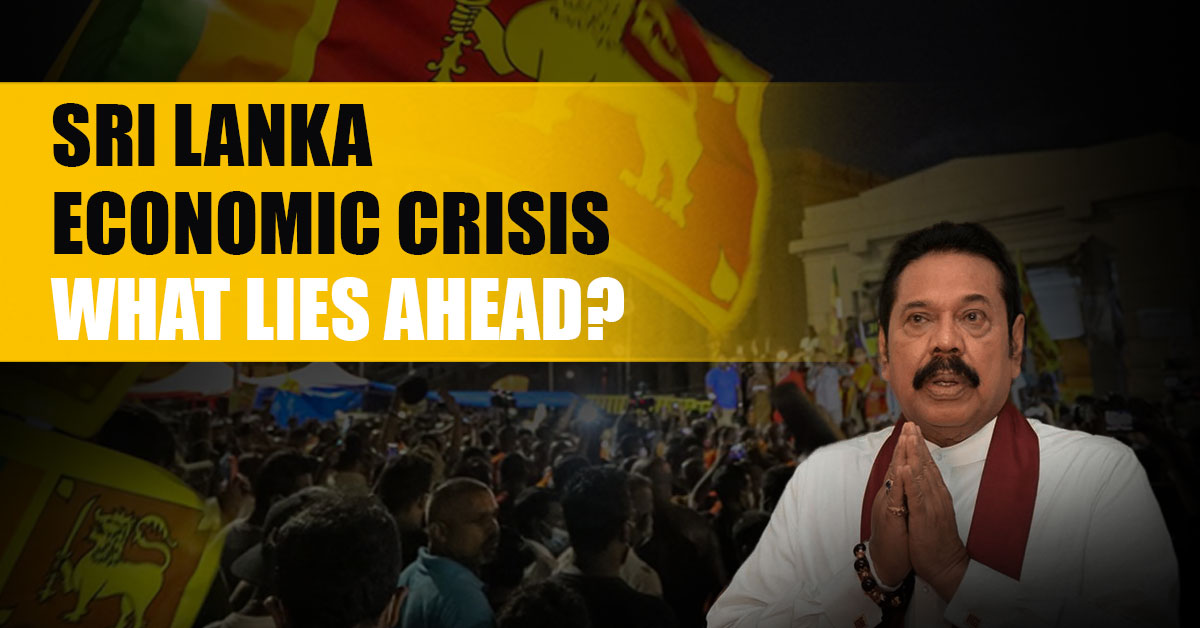Sri Lanka Crisis: What lies ahead?
The island nation of Sri Lanka is at it’s worst since independence. Engulfedby unsustainable debt, soaring inflation rates, disappearing supply chains are having a severely detrimental impact on the country. Taken aback by their country’s economic fallout, the people of Sri Lanka have lost faith in their government and are now responding violently to the worsening developments. The Prime Minister and his government’s resignation does not seem to suffice for the people as they now attempt to push President Gotabaya over the fence. But what exactly does the new Prime Minister and his government do to mitigate the despicable crisis?
Protestors outside the Sri Lankan Presidential Palace in Colombo.
The Sri Lankan economy is a classic example of twin deficitsand the recent economic crisis is a result of sizeable increase in the country’s net external liabilities from average 53% of GDP between 2012-2017 to 65% in 2020. At the same time, gross external liabilities increased from 68% to 78% of GDP as a result of government borrowing and rupee depreciation .Sri Lanka’s economy was always on the peril largely due to economic mismanagement by successive governments. According to a recent report by the IMF – Sri Lanka’s public debt is unsustainable.
Covid 19 & the fallout: the condition of the Sri Lankan economy exacerbated after repeated blows from the Covid 19 pandemic which majorly hit the country’s economic lifeline – tourism. There was a sharp drop in tourist arrivals and a contraction in manufacturing and services activities causing real GDP to contract by 3.6% (y-o-y). Tourism’s share in the GDP declined from 5.6% in 2018 to a mere 0.8% in 2020. The pandemic also forced the forbearance of tax and utility bills by the authorities. Cash transfers were made to vulnerable families and loan repayment moratoria for affected businesses, pushing the economic further towards doom.
Unsustainable Public Debt: Currently Sri Lanka’s public debt is unsustainable. Restoring debt sustainability to bring external public debt and debt service down to manageable levels will play a significant role to raise the country’s NIIP and reduce risks to external sustainability.
Tax cuts and expenditure measures: In the previous Sri Lankan elections, the Rajpaksas promised tax relief and after assuming office they implemented the same. Hence, primary deficit rose to 6.2% of GDP in 2020from 2.0% of GDP in 2019. Tax revenues declined from 11.6% of GDP in 2019 to 8.1% of GDP in 2020 this gap was further widened by suspension of non-priority imports and lockdown measures. Meanwhile non-interest current spending increased by 1.2% of GDP boosted by higher wage spending and pandemic related outlays. Owing to fiscal deficits and new guarantees, largely to cover the losses of Ceylon Petroleum Corporation, public debt increased to 114% of GDP in 2021Q3 from 94% of GDP in 2019.
Inflation increased rapidly in 2021, reflecting exchange rate depreciation and supply shortages. Headline inflation rose to 14.2% in January 2022 against the anticipated 4-6% by Central Bank of Sri Lanka (CBSL) at the same time core inflation to rose from2.7% to 9.9%. Another major concern for Sri Lanka are the disappearing international reserves as the country lost access to international markets, rating agencies have downgraded Sri Lanka to CCC and lower levels resulting in the country losing access to international markets to roll over maturing international sovereign bonds. Despite assistance from countries like India, China, Bangladesh and also allocation of SDR the country could not receive a long lasting impact on reserve adequacy. Owing to large external debt service, unwinding of foreign holdings of rupee denominated treasury securities, also a widening CA deficit, Gross International Reserves declined from $7.4 billion at 2019 end to $2.4 billion at January, 2022 end.
For many days now Sri Lankans are demonstrating on the streets their vengeance against the crisis and the way it was interpreted and is being tackled. There is severe scarcity of essential commodities, fuel & gas supplies have run out, severe power cuts have been introduced as the Sri Lankan rupee continue its plummeting run. The wrath of the people brought down the house of the Prime Minister in flames as the whole Rajapaksa cabinet resigned and RanilWickremesinghe now leads the country through its toughest time. The Sri Lankan economy was always at peril due to mis-governance as well as political and civil instability, the pandemic only brought it down to its very worst. Despite holding a strategic location in the Indian Ocean, the resource rich island is also said to be a prey of China’s debt trap policy as is the example of Colombo Port City Project.
It seems highly unlikely for the defaulted island nation to repay it’s debts on time, especially of the crisis continues or further worsens. The foremost priority of Sri Lanka today should be to obtain a stable government, dedicated towards mitigating the crisis. The fading away of the pandemic also provides scope for boost in tourism, which in turn might now be affected by the civil unrest.
Dozens of challenges loom over the newly appointed Prime Minister RanilWickremesinghe, who now heads the island nation for the sixth time. Earlier, the head of the Central Bank of Sri Lanka Dr. P Nandalal Weerasinghe had threatened to resign if a stable government does not come into existence, however with Wickremesinghe’s appointment the issue seems to be resolved.
The Wickremesinghe administration should adopt a people centric approach for resolving the crisis and formulate a plan of action in accordance. The major concerns affecting the daily livelihood of the people should first be addressed and resources dedicated for the same. These include – refacilitating supply chains of essential commodities and boosting agricultural productivity which had been severely affected by the draconian fertilisers law of the previous administration and also providing more job opportunities to the youth. Better implementation of reforms to spur safer, more productive labor and improved access across the country to public services and education are immediate requirements. Another imperative element to overcome current insurgencies is effective and explicit communication of the government with the people, keeping in front and making them comprehend the plan of action. The government needs to fasten its negotiations and at the earliest bring to ground the IMF reform and then further make best of the legroom provided due to the program.
As of now Lanka is burning but it can revive and restrike, all it requires is civil and political stability. Hope is not all lost for Sri Lanka as Covid now is on the verge of end in the country, also prior to the pandemic the Sri Lankan government was reportinga 5.2% reduction in the rate of poverty by 2016, the accomplishment of near-universal electricity and labor growth in non-farming sectors. The next step then is to continue to reimburse farmers and improve farming technologies rather than stripping away the artificial fertilizer. With more nuanced labor laws and democratic leadership, Sri Lanka’s economic crisis should disappear in time.

